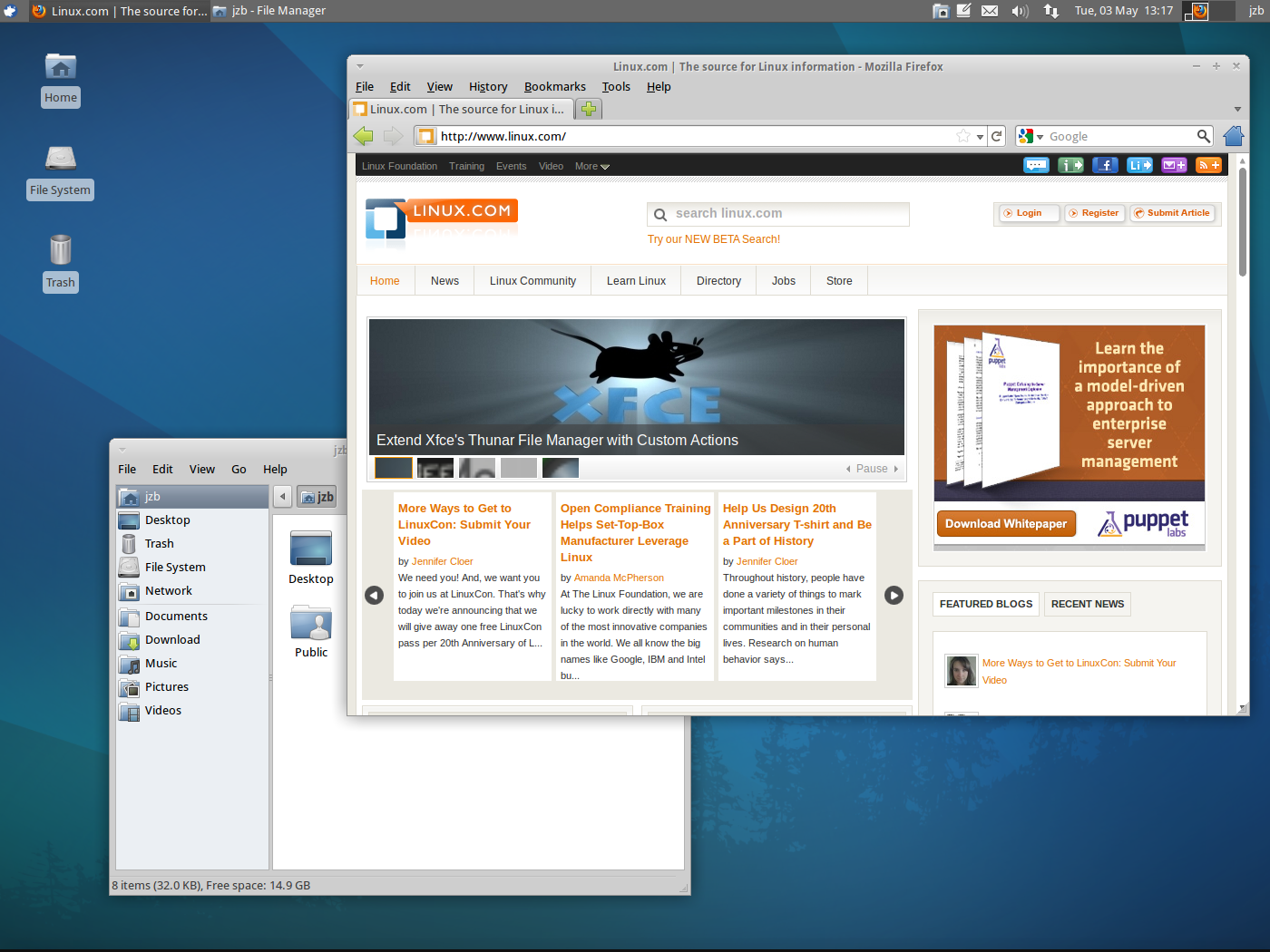The Ubuntu 11.04 release is getting tons of attention thanks to the switch to Unity as the default desktop interface. But what about the rest of the Ubuntu family? While the main Ubuntu release is far and away the most popular, that doesn’t mean that it’s the only arrow in the ‘buntu quiver. For users who want a more traditional Linux desktop, have older hardware, or just happen to have much love for Xfce — there’s Xubuntu. And it’s looking pretty good as of the Natty Narwhal release.
I won’t dwell on the pros and cons of Unity here, but suffice it to say that more than a few Ubuntu users are not quite ready to move to Unity. For some, the 3D requirements rule out their hardware. For others, the interface is just too much a departure from what they’re used to with the standard GNOME 2.x desktop they’ve been using with Ubuntu for some time.
With Xubuntu, you don’t get an exact replica of the GNOME desktop — but it’s a pretty slick desktop in its own right that offers a similar experience, with the added benefit that it doesn’t require 3D and is pretty snappy even on lightweight hardware.
Getting Xubuntu
If you want to install a clean system, then you can grab ISO images for Xubuntu from the Get Xubunut page. You’ll find x86 and AMD64 images, as well as alternate images for systems with less than 64MB of RAM, or have other weirdness. (Or if you just like using the alternate installer. Who are we to judge?)
Already have Ubuntu? Then it’s as simple as installing xubuntu-desktop and you get an Xfce alternative alongside the standard desktop.
The Xubuntu Experience
I’ve used Xfce for many years, off and on, and I have to say that the Xubuntu distribution of Xfce is really nice. The default theme is very attractive, and I like the way it’s been configured. Up top you have the Xfce application menu, and on bottom you have a “dock” with some of the more frequently used (or so they assume) applications like Firefox, GIMP, Thunderbird, the Xfce Settings manager, and so on.
Let’s talk default applications for a moment. Naturally, Xubuntu settles on Firefox 4.0 as the default Web browser — it’s the best choice for any Linux distro. That’s largely where the similarities end with the default Ubuntu applications. Instead of bundling Evolution, the Xubuntu folks provide Thunderbird (which I consider a much better choice). You have Thunar as the default file manager, which provides a full featured file manager that’s still pretty resource friendly.
Instead of Banshee or Rhythmbox, Xubuntu ships with the Parole Media Player, and gmusicbrowser for video and music, respectively. I haven’t had a chance to spend a lot of time with either application, but at first glance they’re pretty good. Minimal, in the case of Parole, but good. You will, of course, need to install some codecs to make full use of the Parole player — like playing DVDs. I spent a bit more time with gmusicbrowser, and I like its flexibility. It has an iTunes-like theme that you can use if you’re coming from Windows or Mac OS X and happen to like that layout — or have just learned to tolerate it and don’t want to learn something new. But it also has themes that mimic Rhythmbox, or a Exaile, or any number of other configurations. The only complaint I have is that when you choose different layouts, it can be a bit like hunting Easter eggs to find the preference dialog to change it back.
Where Ubuntu has switched to Shotwell, Xubuntu still flies the GIMP flag proudly. So if you prefer to have a really full-featured photo editor on hand, Xubuntu has you covered.
Xfce 4.8, which is the version in Xubuntu 11.04, also beefs up its remote filesystem connectivity — which means that you’ll find it much easier to connect to remote shares. Xubuntu 11.04 includes an application called (perhaps inadvisably) “Gigolo” for connecting to remote filesystems over SSH, FTP, WebDAV, and so on.
Continuing the minimalist trend, Xubuntu offers AbiWord and Gnumeric in place of OpenOffice.org/LibreOffice. For users who don’t spend a lot of time exchanging documents with Microsoft Office users or LibreOffice users, this is a pretty good choice. Xubuntu also sports Catfish, a file search utility that looks pretty handy. In all, the selection of apps is fairly nice. If you need LibreOffice, or any other app you’d find in Ubuntu, you always have the repositories.
I really like the way that the right-click menu on the Xubuntu desktop is customized. (At least I think it’s custom.) For example, you can right-click on the desktop or in Thunar (the file manager) and open a terminal right in that directory. It also has an entry for “find in this folder” which opens Catfish to search that folder. Small touches, I know, but useful.
Final Verdict
Though I’ve usually used the mainline Ubuntu release when I use Ubuntu, I have to say that I really like the latest iteration of Xubuntu. It does a great job of showcasing Xfce while providing a unique desktop that gives all the pluses of Ubuntu while still being a bit more like a traditional Linux desktop.
If Xfce is your thing, or if you just want to try a more minimalist desktop, you should definitely give Xubuntu 11.04 a shot. It’s not as adventurous as the main Ubuntu release, but it’s a great choice for users who like a simple and usable Linux desktop.





